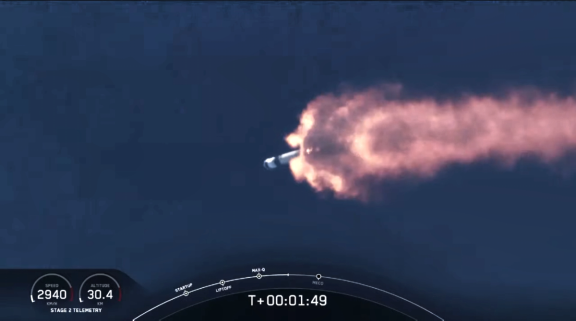
Photo is courtesy of NASA and SpaceX.
A momentus day for the United States Space Program — even that description sounds inadequate, given the importance of this event and the diligence, perserverance and bravery of those thousands of professionals involved in the successful SpaceX Demo-2 launch of astronauts Robert Behnken and Douglas Hurley within the Dragon capsule being lifted toward the International Space Station by the Falcon 9 rocket.
This was certainly a day to remember... the initial delay due to bad weather conditions on Wednesday, May 27, is now in the rearview mirror as the two American astronauts — U.S.A.F. Col. Robert L. Behnken, 49, and Retired Marine Col. Doug Hurley 53 — settle in on their way to the International Space Station (ISS). The flight proceeded perfectly, with all the separations occurring with text-book perfection.

As the SpaceX Falcon 9 rocket’s second-stage Merlin engine shut down as planned, and while the Dragon was soaring to the ISS, the 'cherry on the top' occurred as the the Falcon 9 rocket’s first stage descended toward SpaceX’s drone ship, “Of Course I Still Love You,” that was waiting in the Atlantic Ocean and landed perfectly.
U.S. Air Force Col. Bob Behnken, a mechanical engineer with six spacewalks on his resume, will oversee rendezvous and docking at the International Space Station.
Retired Marine Col. Doug Hurley will be in charge of launch and landing, which is appropriate for the pilot of NASA’s last space shuttle flight. He was selected as an astronaut in 2000, and is the joint operations commander on the Demo-2 mission, responsible for activities such as rendezvous, docking and undocking, as well as Demo-2 activities while the spacecraft is docked to the space station.

The two astronauts are classmates and friends, veteran spacefliers married to veteran spacefliers, and fathers of young sons.
Regarding Wednesday's delay and questions regarding the astronauts' disappointment Hurley related that, "On my first flight STS-127 on Shuttle Endeavour, we scrubbed 5 times over the course of a month for technical and weather challenges. All launch commit criteria is developed way ahead of any attempt. This makes the correct scrub/launch decision easier in the heat of the moment."
It's been since 2011 that the U.S. participated in transporting astronauts and equipment to the International Space Station. Since then, the U.S. has relied on Russia’s Soyuz capsules, described as workhorses that are still in use after a half-century plus, that have kept NASA astronauts flying to the space station.

While described as reliable, the Soyuz is, and looks, dated, especially when compared with the sleek design of SpaceX's Dragon. Although the full automated Dragon has four seats lined up in a row, only the center two will be occupied for this especially risky test flight. A test dummy soloed on last year’s Dragon crew capsule debut.
“We want it to not only be as safe and reliable as you’d expect from the most advanced spacecraft in the world ... we also want it to look amazing and look beautiful,” said Benji Reed, a SpaceX mission director.
There was no need for another flying machine like the shuttle, which was built to haul hefty satellites and space station parts, said retired NASA manager Steve Payne, a former Navy fighter pilot, who added, “What we're trying to do now is just taxi service up and down, and you don't need the huge semi anymore. You can use a sedan. Yes, wings are nice. They give you more options as to where to land and a little more control.”
SpaceX will continue the development of their new spacecraft systems that will provide roundtrip crew transportation services to the International Space Station, returning to the United States the ability to launch humans into space.
www.spacex.com


